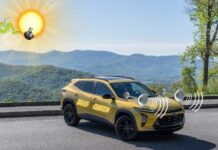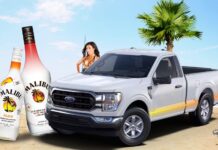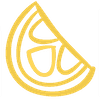The recent surge in the electric vehicle market has created a run on the valuable resources vital to the industry’s growth. These include the expected technological building blocks––lithium ion batteries, microchips, and the like––but it’s one of the less concrete components that has manufacturers scrambling to stake their claim. As new all-electric brands like Byton, Lordstown, Nio, and Rivian start to debut their products, they’re discovering the market is disconcertingly lacking in unclaimed names on which to base their forthcoming models. A quick visit to any used car dealer will lay the problem bare: the industry’s linguistic real estate has been comprehensively gobbled up over the decades, with auto manufacturers using nearly every appropriate name in existence.
These range from animal names, both tough-sounding (Ram, Mustang, Viper, Barracuda), cute (Beetle, Skylark, Honey Bee) and wherever a Gremlin falls on the spectrum. Many rough-and-tumble western state names––Colorado, Dakota, Montana––are also off the table, leaving manufacturers scraping the bottom of the barrel and earnestly considering releasing vehicles under names like the Mazda Idaho and the Chrysler Alabama. Volkswagen was one of the first to fold under the pressure, lazily dubbing one of its four-door convertibles the VW “Thing” as far back as 1968. The issue has only been exacerbated by the growth of the EV industry, which so far has largely resorted to branding their offerings with boring alphanumeric designations such as R1S, B1, EV6, and the like. While this cat-walking-across-a-keyboard approach to branding might carry an air of sophisticated modernity for some, many feel it signals a terminal lack of creativity within the industry.
The naming issue has been a major roadblock at EV startup Spark-E, a luxury brand focused on the upper end of the growing market sector. The Spark-E team first explored taking a page from iconoclast “inventor”/billionaire dilettante Elon Musk, who made the type of headlines from which he draws his life force when he announced his seventh child would be named X Æ A-12. The child was conceived in partnership with Canadian musician/haircut influencer Grimes, who explained that X stands for “the unknown variable,” Æ stands for “my elven spelling of Ai,” and A-12 is the “precursor to SR-17 (our favorite aircraft).”
“We’re a luxury brand, so our design approach is focused on exclusivity, refinement, premium detailing, and the type of cutting-edge features found only on the world’s finest automobiles. That said, a name like X Æ A-12 sounds douchey as hell, even to us,” says Ephraim T. Killingsworth II. The automaker is currently exploring some less cringe-inducing names, with frontrunners including Cristal, Dividend, and Saint-Tropez.
Some U.S. automakers have turned to the tried-and-true method of lifting words from other languages––Eldorado, Pinto, Kona––though there have been a few translation errors. While Toyota landed on “Olé” for a new compact offering, a mix-up with a francophone subcontractor tapped to produce the badges led to the delivery of 100,000 units reading “Au Lait.”
“The word ‘Olé’ captures that excitement and fighting spirit of a bull in the ring, but “Au Lait” just means ‘with milk,’ which just doesn’t hit quite the same,” says Jeff Coleman, VP of Branding at Toyota. “We’re going to roll with the name for now because it’s too late to order new badges, but this could really impact our relationship with vegan drivers.”
These foreign language names are often prone to mistranslation or misunderstanding, as Volkswagen learned in the 90s when it introduced the Vento. Designed as a successor to the popular Jetta, the Vento took its name from the Italian word for “wind.” Lacking the cultural context––and apparently any Italian-speaking employees to set them straight––the brand only learned later that while the word does mean wind in Italian, it’s most often colloquially used to me “wind…from one’s butt”, which is to say, a fart.












